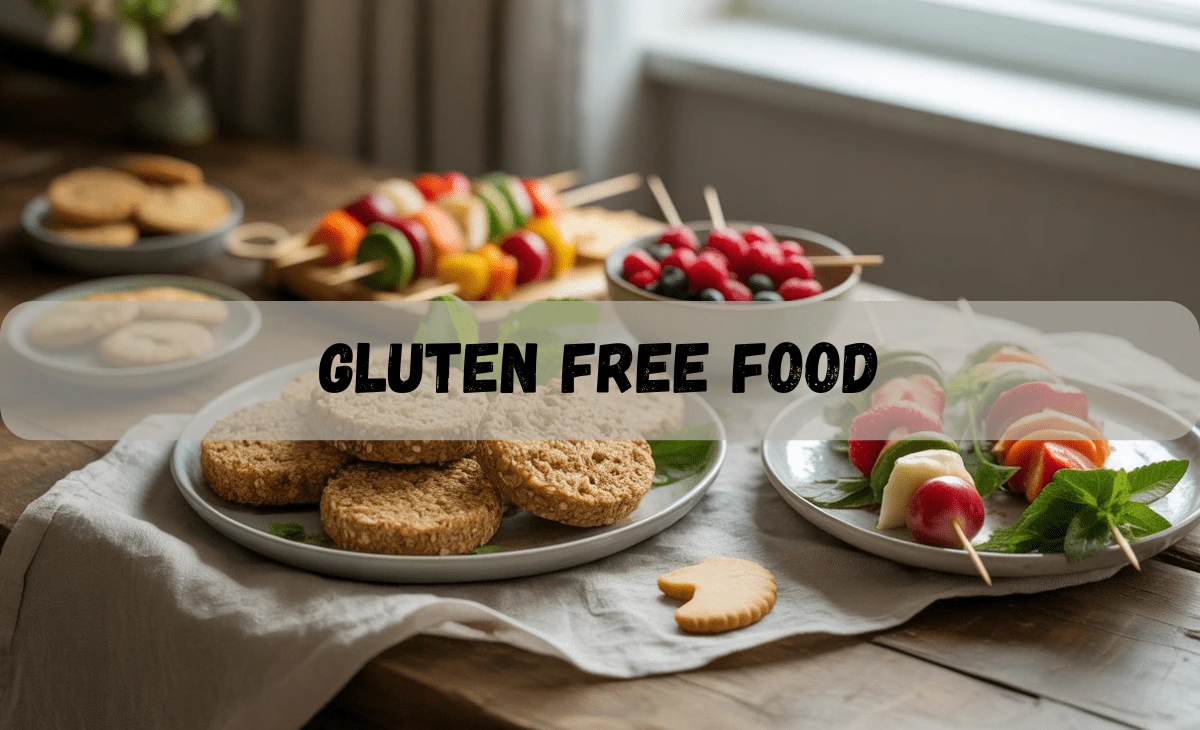In today’s health-conscious world, more people are turning to gluten free food not only for medical reasons but also for wellness and dietary preferences. Whether you’re newly diagnosed with celiac disease, gluten sensitive, or simply exploring a healthier lifestyle, understanding gluten-free eating is essential.
Gluten is a protein found in wheat, barley, rye, and their derivatives. For many, it’s harmless. But for those with gluten-related disorders, consuming gluten can lead to serious health issues, including digestive damage, nutrient deficiencies, and chronic fatigue.
This guide will help you learn about gluten free food, its pros and cons, and how to switch to it with confidence.
Understanding Gluten and Gluten Free Food
Gluten is a naturally occurring protein that gives dough its elasticity and chewy texture. It’s present in many staple foods like bread, pasta, cereals, and baked goods. Gluten free food, therefore, refers to items that do not contain any trace of gluten, either naturally or through careful preparation and processing.
Some naturally gluten free foods include:
- Fruits and vegetables
- Meat, poultry, and fish (unprocessed)
- Eggs
- Dairy products (most varieties)
- Legumes, nuts, and seeds
- Gluten-free grains like rice, quinoa, millet, and buckwheat
For individuals with celiac disease or non-celiac gluten sensitivity, strictly avoiding gluten is essential for their health.
Health Benefits of a Gluten-Free Diet
A gluten-free diet offers various benefits, especially for those who are intolerant or allergic to gluten. But even people without sensitivities sometimes report positive outcomes.
For Individuals With Gluten Sensitivity or Celiac Disease:
- Improved Digestive Health: Reduces bloating, diarrhea, and stomach pain.
- Enhanced Nutrient Absorption: Helps the intestines heal and absorb nutrients properly.
- Increased Energy Levels: Eliminating gluten often alleviates fatigue caused by nutrient malabsorption.
For the General Population:
While there’s limited evidence supporting gluten elimination for those without medical necessity, some report:
- Reduced inflammation
- Better skin health
- Improved mental clarity
However, it’s important to ensure proper nutrient intake when cutting out gluten-containing foods.
Common Challenges in Going Gluten-Free
Although gluten free food has become more accessible, the transition isn’t always simple. Here are a few hurdles you might face:
Hidden Sources of Gluten
Gluten can be found in unsuspecting foods and products, such as:
- Sauces and gravies (often thickened with wheat flour)
- Processed meats
- Beer and some alcoholic beverages
- Seasonings, bouillons, and flavorings
- Medications and supplements
Risk of Nutritional Deficiencies
Many gluten-containing foods are fortified with essential nutrients. Removing them can lead to a lack of:
- Fiber
- Iron
- Calcium
- B vitamins
A well-planned diet is essential to maintain balanced nutrition.
Social and Emotional Adjustment
Eating out, traveling, or attending events can become stressful. You may have to explain your dietary needs, ask for modifications, or avoid certain dishes altogether.
Step-by-Step Guide to Starting a Gluten-Free Diet
Making the switch to gluten-free doesn’t have to be overwhelming. Here’s how to do it the right way:
1. Consult a Healthcare Professional
Before making any dietary changes, get tested for celiac disease or other intolerances. A registered dietitian can guide your food choices.
2. Learn to Read Labels
Look for certified gluten-free labels. Ingredients like “wheat starch,” “malt extract,” or “hydrolyzed wheat protein” are red flags.
3. Stock Up on Safe Staples
Create a gluten-free pantry with naturally gluten-free items:
- Fresh produce
- Gluten-free grains (rice, quinoa, amaranth)
- Dairy, eggs, and meats
- Legumes and pulses
4. Avoid Cross-Contamination
Use separate toasters, utensils, and cutting boards if you share a kitchen with gluten eaters.
5. Plan Meals and Snacks
Prepare your meals to avoid hidden gluten and rely on safe recipes. Gluten-free meal planning apps like Yummly or Mealime can help.
Real-World Gluten Free Food Examples
In today’s food industry, gluten-free options are booming. From packaged snacks to fine dining, here’s what a day of gluten-free eating might look like:
Breakfast:
Oatmeal made from certified gluten-free oats with berries and almond milk.
Lunch:
Grilled chicken salad with quinoa, arugula, tomatoes, and olive oil dressing.
Dinner:
Zucchini noodles with gluten-free pesto, roasted vegetables, and grilled salmon.
Snacks:
Rice cakes with hummus, mixed nuts, or a gluten-free protein bar.
Brands like Udi’s, Glutino, Banza, and Bob’s Red Mill offer reliable gluten-free products that cater to different tastes and needs.
Tips for Eating Gluten-Free When Dining Out
Navigating restaurants can be tricky, but not impossible. Here’s how to stay safe:
- Research restaurants with gluten-free menus or celiac-safe kitchens…
- Ask questions about food preparation and ingredients…
- Choose simple dishes with fewer processed items…
- Avoid shared fryers or utensils that may contain gluten residue…
Apps like Find Me Gluten Free can help you locate trusted gluten-free spots.
FAQs About Gluten Free Food
Is gluten free food healthier for everyone?
Not necessarily. Gluten-free does not always mean healthier. Processed gluten-free products can still be high in sugar, fat, or salt.
Can I lose weight on a gluten-free diet?
Weight loss is not guaranteed. It depends on your overall calorie intake and nutritional balance.
Are oats gluten-free?
Oats are naturally gluten-free but are often contaminated with wheat. Always buy oats labeled “certified gluten free.”
What alcohol is gluten-free?
Most distilled spirits are gluten-free. Look for labeled gluten-free beers, wines, and liquors to be safe.
Is gluten intolerance the same as celiac disease?
No. Celiac disease is an autoimmune condition. Gluten intolerance (or sensitivity) causes symptoms but does not damage the intestine.
Read More About: LifeStyle
Conclusion:
Adopting a gluten-free lifestyle can feel like a big step, but with the right tools, planning, and mindset, it’s entirely manageable and potentially life-changing. Whether you’re doing it for medical reasons or personal wellness, the key lies in education, label-reading, and smart food choices.
Want to start your gluten-free journey? Begin by checking your pantry, exploring local gluten-free stores, or downloading a gluten-free recipe app. Empower yourself with knowledge, and you’ll thrive on a gluten-free diet.


